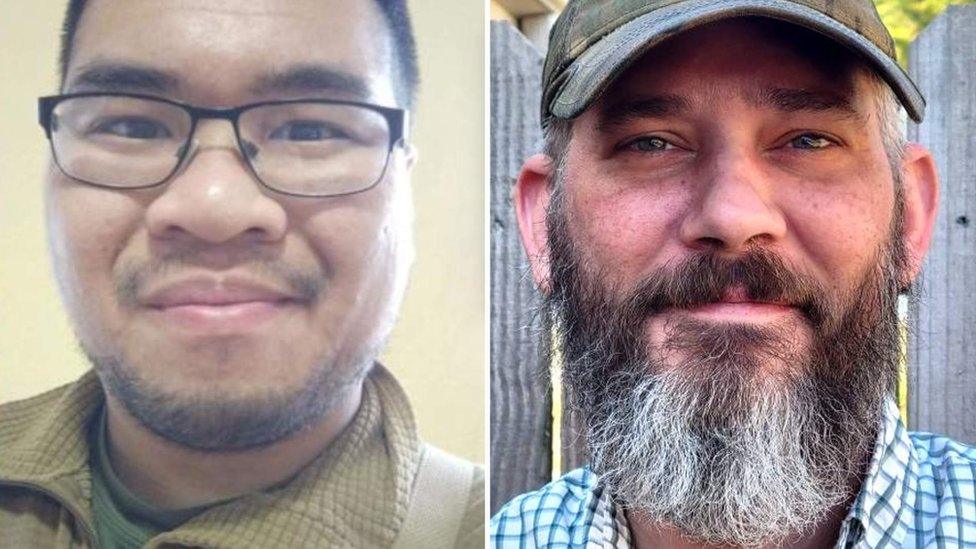The US army base training Ukrainian fighters
- Published
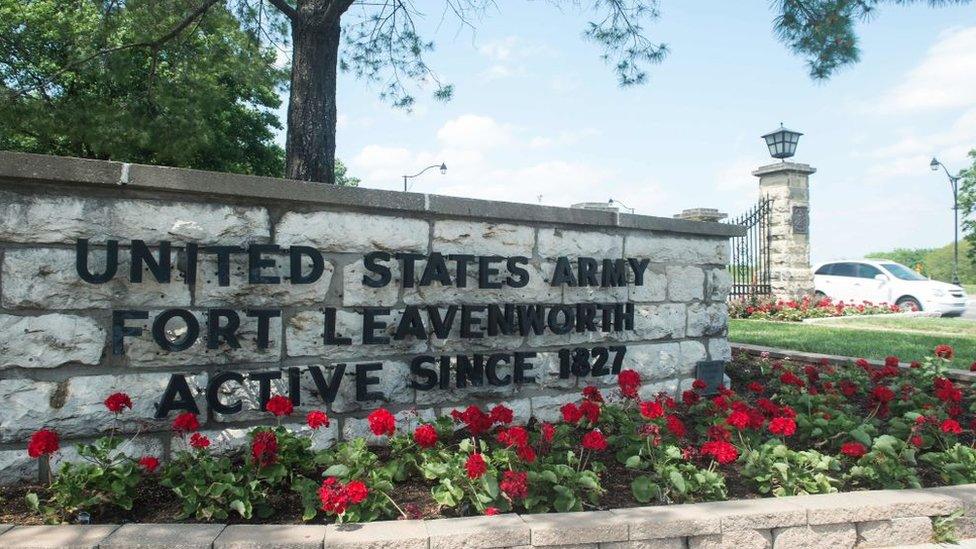
The sign outside Fort Leavenworth.
Senior-level Ukrainian officers have been studying in the US state of Kansas, thousands of miles from Russia's invasion and the battlefields of Donbas.
Outside the Fort Leavenworth army base, wheat fields are starting to turn. Wide, open prairie land, with softly rolling hills, stretches for miles, and the sky is huge.
This quintessentially Kansas landscape has become the backdrop for generations of international soldiers, who head to the US base to receive strategic training.
Ukraine's deputy interior minister, Anton Herashchenko, has remarked on its similarities to the landscape of Donbas, in the country's heavily-contested east.
Pentagon spokesman John Kirby says the same: "That part of Ukraine is a bit like Kansas, so it's a little bit flatter, it's a little bit more open," he told media during a press briefing.
Fort Leavenworth has proved to be a valuable training ground for dozens of Ukrainian soldiers over the past several decades, who spend a year studying at the base's US Army Command and General Staff College.
Today, experts say, the knowledge they gain there is helping Ukrainians mount a fierce defence of their country - in part because of the contrast between the flexibility of American military coursework and the rigid Soviet-style education given to Russian soldiers.
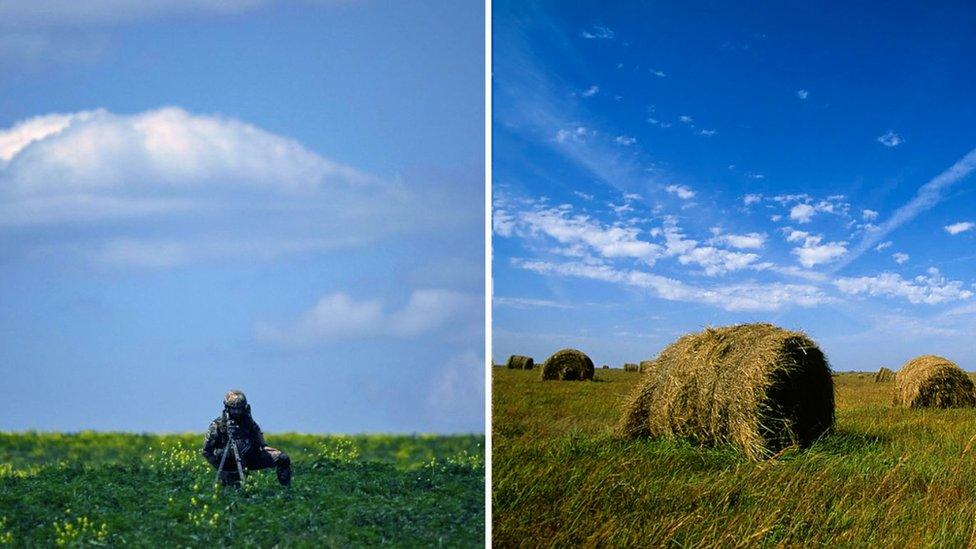
Kansas fields (right) share similarities with the Donbas region terrain in Ukraine
Inside classrooms, chairs are arranged neatly, and look like the kind one would find on campuses across the country, but unlike elsewhere, an electronic sign, a "secure light", can sometimes be seen blinking. It is marked in bold letters ,"secure" and "non-secure". When information is classified, a light blinks on, with a red background, reminding people that the information can be shared only with those who have clearance.
As of today, more than 8,000 international officers have trained at the base in Kansas, including some of Ukraine's top generals. They include Oleksiy Nozdrachov, the Ukrainian Armed Forces' chief of coordination centre in Kyiv, and Mykhailo Vitaliyovych Zabrodskyi, a military commander who has fought in Donbas.
For Ukrainian students at Leavenworth, lessons are being put into practice back home. A Ukrainian student, a lieutenant colonel, left during the spring semester to join the war.
"He's in the fight," said Jim Fain, the director of the International Military Student Division at the college. "He's actually been promoted."
Ukrainian officers started coming to Fort Leavenworth in the early 1990s, after their nation became independent. Back then, they studied alongside Russian officers. Then, in 1999, the Russians stopped showing up, about the same time that Hungary, Poland and the Czech Republic joined Nato.
Mr Fain attributes Russia's decision not to send soldiers to Leavenworth to increasing tensions over Nato.
This year, the programme for international students has a $7m budget (£5.8m). The officers are chosen by their home countries. About half are funded by their home government, and the others are supported by grants provided by the US State Department to foreign governments.
Since the start of the war in Ukraine, international training for the Ukrainian troops has been stepped up. Some of them have gone to the UK for driving lessons for armoured vehicles. Others are in Poland, learning how to operate weapons systems provided by the US. But their numbers at Leavenworth have remained consistent with years in the past, Mr Fain said.
The training they receive at Fort Leavenworth focuses on war theory, ethics and other aspects of the modern military, in sharp contrast to the Soviet-style training that has been used in Russia, according to experts.
"Soviet education was all about subordination, and it discouraged independent thinking," said Vitaly Chernetsky, a professor at the University of Kansas in Lawrence. "At Leavenworth, the emphasis is on an analytical approach. It creates military specialists who are true intellectuals".
Professors at Leavenworth describe the Soviet model of military training as rigid and authoritarian. One of them, Mahir Ibrahimov, 66, knows first-hand: He studied at a Soviet military school in the 1970s.
Soviet instructors "would stand next to you until you learned," he said - and if you didn't, "they would just hit the desk," he added, making a hard, swiping motion with his arm. "Sometimes you would be hit".
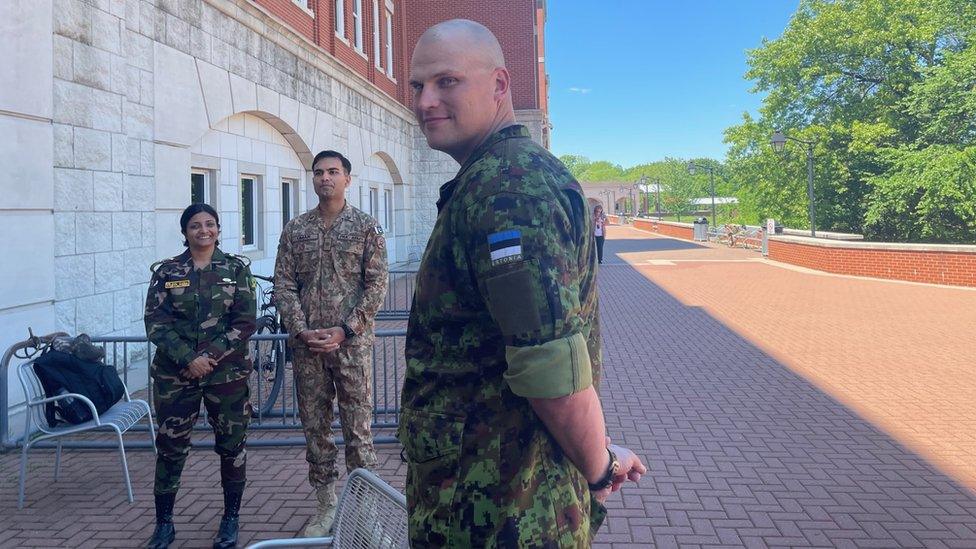
Lauri Teppo is at Fort Leavenworth all the way from Estonia.
Ukraine faces a war today in which its defence is outnumbered and outgunned - Russian forces are said to be ten times larger in cities in the Donbas, where heavy fighting continues for control of the region.
But the Ukrainans' advantage is that they can think independently on the battlefield, according to Matt Hofmann, a graduate of the Leavenworth programme who worked with Ukrainian officers in Afghanistan.
"The Russians are still trying to fight a linear battle with tanks on line, and sticking very much to their doctrine," he said. "They can't handle the chaos that the Ukrainians are sending out".
Related topics
- Published16 June 2022
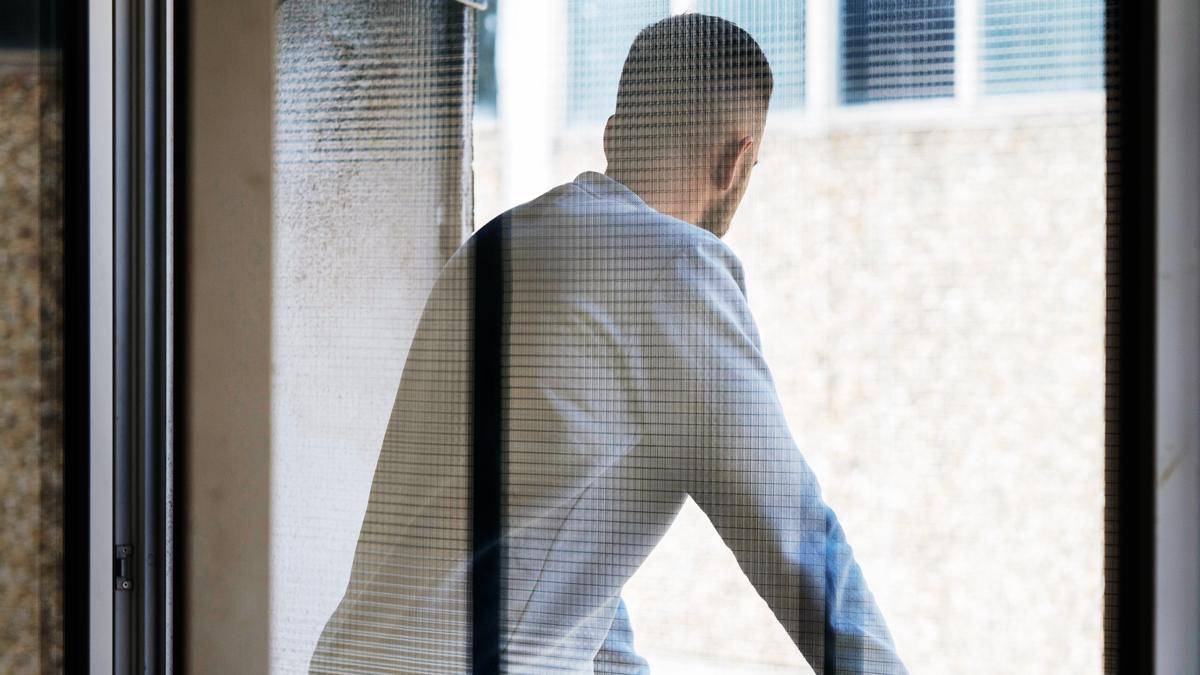
- Published15 June 2022

- Published17 June 2022
